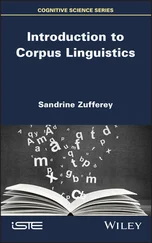This model is shown schematically in figure 38.
In figure 38, we see the stage at which the phrase waste the whole term has been put into the buffer (we omit the past tense -ed on wasted for simplicity). This is an
‘abstract’ representation of what the speaker intends to say. However, we now need to copy this to the next level of representation, that at which we specify the instructions to the articulators of the vocal tract. For the sake of argument, we’ll assume that the syllabic structure of the phrase has been copied. This forms the skeleton for the set of instructions to the articulators and is illustrated in the bottom half of figure 38. We now need to fill in the appropriate slots in the copied syllable structure. The system scans the contents of the buffer from left to right and copies onsets to onset slots, codas to coda slots and so on. As it does so, it monitors its progress by checking off each of the segments it copies. A checked-off segment will not normally be eligible for further copying, of course. In figure 38, the system has made an error by running ahead of itself and has selected as onset of its first syllable the onset of the final syllable (it is probably no coincidence that this final syllable is the most emphasised word in the phrase). The scanner continues, this time from the correct syllable, and copies the nucleus then the coda of waste and moves on to the next syllable. When it reaches the fourth syllable, it encounters a problem. The onset here, inside the dotted rectangle, has already
Processing sounds
117
been copied. It seems that the copier has two options at this point. Firstly, it can ignore the fact that the onset ‘t’ has already been copied, and copy it again, giving the phrase tasted a whole term. This is an anticipation error. However, if, as we have suggested above, a checked-off item is not available for further copying, this route will not be available; arguably, then, the only course open to the copier is to recognise that the /w/ onset of the first syllable has yet to be copied and to use this stray /w/ to fill in the stray onset slot in the final syllable; this will also result in the stray consonant being finally checked off by the monitor. This gives us our
spoonerism.
There is one further point to make about phonology and speech errors. Section
14 will examine cases where whole words (or meaningful parts of words) are exchanged, but examples of this of particular relevance here appear in (83): (83) a.
ministers in the church
⇒ ministers in the church-[əz]
b.
take the steaks out of the freezer ⇒ take the freezer-[z] out of the steak-er In (83a), the plural ending of ministers is perseverated on the word church. In
(83b), we have an exchange between steak and freezer. In both cases, the plural ending accommodates its pronunciation: on ministers in (83a), it is /z/, but when it gets added onto church, it is pronounced as /əz/, in accordance with the phonological rules of English. In (83b), when the plural ending finds itself attached to the wrong word, it again accommodates from the /s/ form in steaks to the /z/ form of freezers. More generally, we find that speech errors never give rise to phonological combinations that would be disallowed by the language. That is, we don’t find violations of phonological rules or of the phonotactic constraints of the language.
This means that a speech error is nonetheless always a pronounceable word in the language. This shows that the forward-planning mechanism operates at a level before the final phonological adjustments take place, such as the pronunciation of the plural ending (exercises 3, 4 and 5).
Other aspects of phonological processing
When linguists study the form and function of the linguistic expres-
sions found in their native language, and write grammars to account for them, their primary source of data is provided by their own intuitions regarding how a word is pronounced, whether a sequence of words is a legitimate sentence, etc. If they work on a language which is not their own, such data may be provided by
an informant who is a native speaker (see Introduction, p. 2). Obviously, if we study the utterances produced by small children or the results of psycholinguistic experiments, we are dealing with different kinds of data, and in so far as such data are used to test and modify theories of grammar, they can be regarded as providing an indirect source of evidence on the nature of linguistic competence. Other sources of indirect evidence, of particular relevance to sound systems, are language games, poetic devices and writing systems, and we will close this part of
118
sounds
the book by looking briefly at the last two of these (for a language game, see
exercise 6).
One aspect of phonological structure which seems to be easily identifiable even by non-linguists is the syllable. For instance, it is relatively easy to get people to identify the number of syllables in a word, and even very small children (as young as three) can be trained to tap out the number of syllables of polysyllabic words like elephant. Many poetic systems work on a syllabic principle. Particularly famous are Japanese verse forms such as the haiku, in which each line has to have a set number of syllables.
Rhyme constituents, too, are very salient. Rhyme, of course, is the basis of classical European versification, but very small children are aware of rhymes and often play rhyming games with themselves in which they make up nonsense
words to rhyme with words they know. Perhaps less obviously, onsets can also be important in poetic systems. Before rhyming became the organising principle of English verse, around the time of Chaucer, English poetry operated with a system of alliteration. For instance, in the mystical poem The Vision of Piers Ploughman by William Langland (a contemporary of Chaucer), there are no rhymes. However, every line generally has at least three accented words whose stressed syllables begin with the same onset. Sometimes, if there is a consonant cluster, it is just the first member that governs the alliteration, as in the last line of the opening of the Prologue reproduced in (84) (the alliterated onsets are in bold): (84)
Prologue
In a somer sesoun whan softe was the sonne,
I shoop me into shroudes as I a sheep were,
In habite as an heremite unholy of werkes,
Wente wide in this world wonderes to here.
Ac on a May morwenynge on Malverne hilles
Me befel a ferly, of Fairye me thoghte.
I was wery forwandred and wente me to reste
Under a brood bank by a bourne syde;
And as I lay and lenede and loked on the watres,
I slombred into a slepynge, it sweyed so murye.
Translation
In a summer season, when mild was the sun,
I dressed myself in clothes as if I were a sheep,
In habit as a hermit untrue to his holy vows,
I went wide in this world to hear wonders.
But on a May morning on Malvern hills
A strange experience befell me, from Fairyland it seemed.
I was weary from wandering and went to rest
under a broad bank by the side of a stream;
And as I lay and leaned and looked at the water,
I fell into a sleep, it [=the stream] made such a sweet sound.
There is one important phonological unit which ordinary language users tend
not to be consciously aware of. This is the phonemic segment. This is not to say that the segment-sized unit plays no role in the phonological system of the
Processing sounds
119
language, of course. It would be impossible to state a good many phonological rules without reference to segmental structure. Moreover, there is ample evidence that segment-sized units are important in speech production. As we have seen above, speech errors at the phonological level tend to involve constituents of syllables, down to the level of the segment. However, segment-sized units have a far less important role in poetry or writing systems than do, say, syllables or even rhymes.
Читать дальше
![Andrew Radford Linguistics An Introduction [Second Edition] обложка книги](/books/397851/andrew-radford-linguistics-an-introduction-second-cover.webp)











